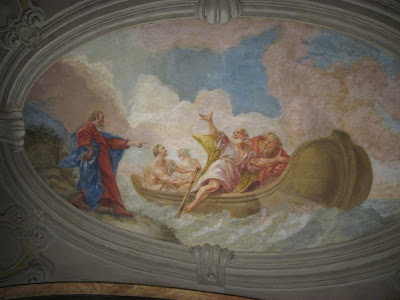
Our good friends Mervin and Susan Marshall are renting out rooms in their home on the west coast of Barbados as a bed and breakfast to raise funds for a young person from their parish who is hoping to attend World Youth Day in Madrid.
They have two bedroom available, each with one queen-size bed and a stand-alone fan. Guests will have access to a shared kitchen, equipped with refrigerator, hotplate, kettle & toaster, pots & pans, dishes etc.
The cost is $70 a night or $450 for a week, including shuttle service in and out of Speightown, continental breakfast, and a few surprises. This offer is available until June 30, 2011. Mervin and Susan aren't normally in the B&B business.
Ann and I had the joy of staying at MervSue's Hideaway at 22 The Rock, St. Peter's Barbados, on two occasions for two weeks each. But we went there as friends, not paid guests. We know them as fellow Catholics interested in religious communications.
Catholics are a decided minority on the beautiful little (166-square-mile) island, and the Marshalls seem to know just about all of them. They are both very active in their parish and in the diocese.
Mervin hosts a weekly Catholic radio show for young people, Cari-Vibes, on which Ann and I once appeared as guests talking about the concept of vacation as an educational and spiritual journey for Roamin' Catholics.
The always-busy Mervin also has a weekly television program on gardening. It's no surprise, then, that 22 The Rock is beautifully landscaped. It's also close to everying. (In Barbados, everything is close to everything.) Staying there would be a special treat, while helping a good cause at the same time. If you're interested, write to mervsue@hotmail.com or delleous@gmail.com.



































